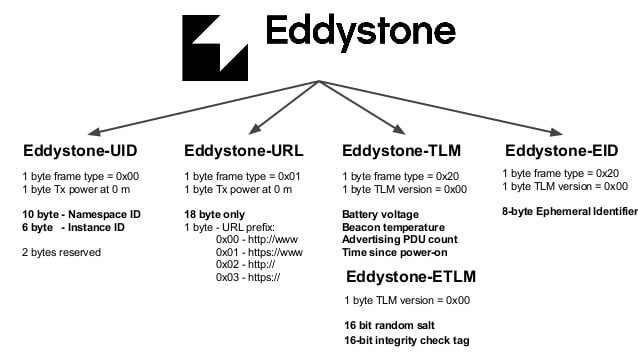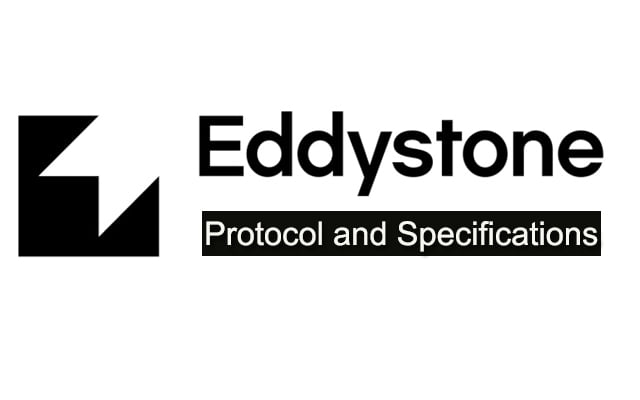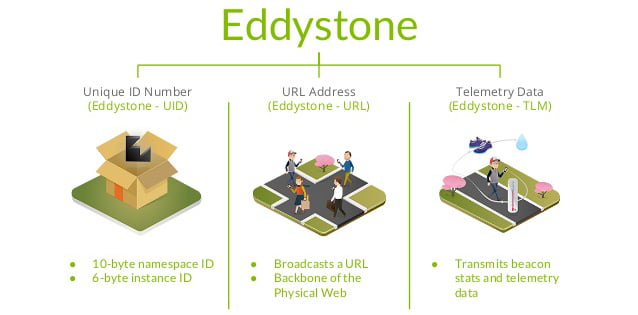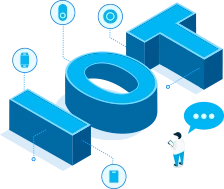Bluetooth beacons are taking over all the marketing strategies. They enable proximity-aware applications for businesses, customers and other industrial environments. This article explains the Eddystone protocol and specifications. Moreover, you will learn about Bluetooth BLE beacon standards of Eddystone, iBeacon, and AltBeacon as well.
So the beacons are about to transform our entire world. Before we move ahead, how do their advertising packets work and what is their standard?
Bluetooth BLE beacon standards
Today there is three critical market standard for beacons.
1. Eddystone beacon from Google
Google launched this beacon somewhere back in 2015. It has compatibility with both Android and iOS smartphones. Eddystone transmits packets with three frame types. Different businesses can manage their beacons using the Proximity Beacon Application Programming Interface.
2. iBeacon from Apple
Apple launched its beacon in 2013. It has also compatible with Android and iOS smartphones. It uses low energy Bluetooth vicinity detecting technology to transmit a universally unique identifier known as UUID. We will explain it in detail in this article ahead.
3. AltBeacon from Radius Network
Radius networks launched its beacon somewhere in 2014. It is an open-source beacon having a wide range of open markets with a different type of beacon applications.
All three standards use BLE broadcast mechanism to transmit advertising packets on the BLE channel. They use 37, 38 and 39 to avoid conflicting Wi-Fi traffic.
Eddystone Protocol Specifications
All standards use their own structure of the BLE advertising for adding their data and formats. The beacon device advertises the same packet on all three of the advertising channels every time. Therefore, all BLE packet scanner or receiver can pick that packet easily. Once the receiver receives, it determines that either that packet is decodable or not. If that is decodable, the receiver takes the corresponding action.
Common Elements
Within the advertising packet, there are different structures of data payload: length, type, and data.
• The length field basically defines the overall size of the subsequent data fields and their data type.
• Moreover, the data type explains whether the data is a name or A URI. It further designates that either it is a service UUID or one of the other defined data types.
• The last one is packet data. It is where beacon devices take the structure as a step further. So they define a sub-structure inside the data field. They do so to determine the various standards.
It is important that both data and advertising packets use the same format. Beacon devices basically follow the standard advertising packet formats. However, they include data payload for one or more standards.
Eddystone beacon protocol format by Google

Eddystone is a cross-platform, open-source beacon format presented by Google. It defines many different frame types as compared to other beacon standards. Beacons can use these formats combined or individually.
Eddystone-UID
You can use this format to broadcast a unique beacon ID. It broadcast a unique 16-byte beacon ID. The ID contains a 10-byte namespace and a 6-byte instance. Furthermore, this ID can be useful for mapping a device to a record in the external storage.
The namespace portion uses for grouping a particular set of beacons. On the other hand, the instance ID is helpful to identify individual devices in the whole group. In addition to this, the division of ID into instance components and namespace facilitates to optimize of BLE scanning strategies.
Eddystone-URL
Beacons use it to broadcast Uniform Resource Locators. The frame broadcasts a URL that has a compressed encoding format to fit the AD package. After decoding the URL, users can use the URLs to access the internet.
For example, if an Eddystone-URL beacon broadcast the URL like goo.gl/moco18, the client can go to the web page by tapping on it.
Eddystone-TLM
It is for broadcasting telemetry -health and status- data about the beacon device itself. So this frame broadcasts telemetry information about the beacon device. This information includes battery voltage, counts of broadcast packets, and device temperature.
Eddystone-EID
It uses ephemeral identifiers to enhance the security of the beacons. This frame broadcasts an encrypted ephemeral identifier. This identifier changes periodically during the initial registration at a rate determined with a web service.
The Eddystone-URL frame offers web content bases on proximity without requiring an app for different mobile platforms. Chrome for iOS already supports this Eddystone feature. By utilizing Chrome Today Widget, users are capable to access web content relevant to the vicinity. So they use to receive notifications when encountering beacons.
You can find different protocol specifications along with tools and open-source code on Google Eddystone GitHub page.
iBeacon data of Apple
![]()
Apple was the first company that introduced a beacon to the world. The iBeacon is a trademark by Apple. All companies that want to sell this product must obtain a free license from Apple.
iBeacon uses a 30-byte packet. Beacons must broadcast this packet on 100 meters intervals. However, all beacons do not adhere to this distance restriction. Different iOS apps that use the Core Location framework can ask iOS to continuously monitor for beacon-region-crossing events. It includes existing or entering the proximity of an iBeacon by the UUID. Moreover, it further includes major and minor fields.
IOS tracking takes place whether the application is running or not. Moreover, it can turn on the closed app. It is mandatory to turn on location features. Otherwise, the app will not monitor the location.
AltBeacon standard from Radius Networking
AltBeacon is another popular beacon standard. The specification of AltBeacon is an attempt to create an OS-agnostic and open-source standard. For detailed specifications of AltBeacon, you can visit the official website of AltBeacon.
Eddystone-URL is not working anymore?
Sometimes it appears that Eddystone-URL is not working. The reason is: Google has some ranking or scoring mechanism. It means sometimes Google does not show a URL having a very low click-rate. Moreover, they also hide notifications or URLs that you have dismissed in the past. However, it is difficult to specify the exact reason here. If there is an unseen issue, you can take your issue directly to the Physical Web crew.

























